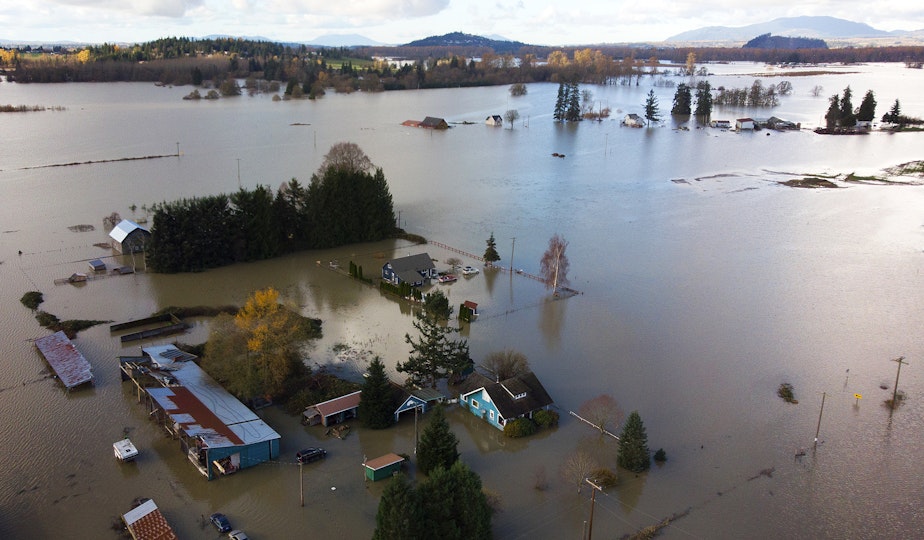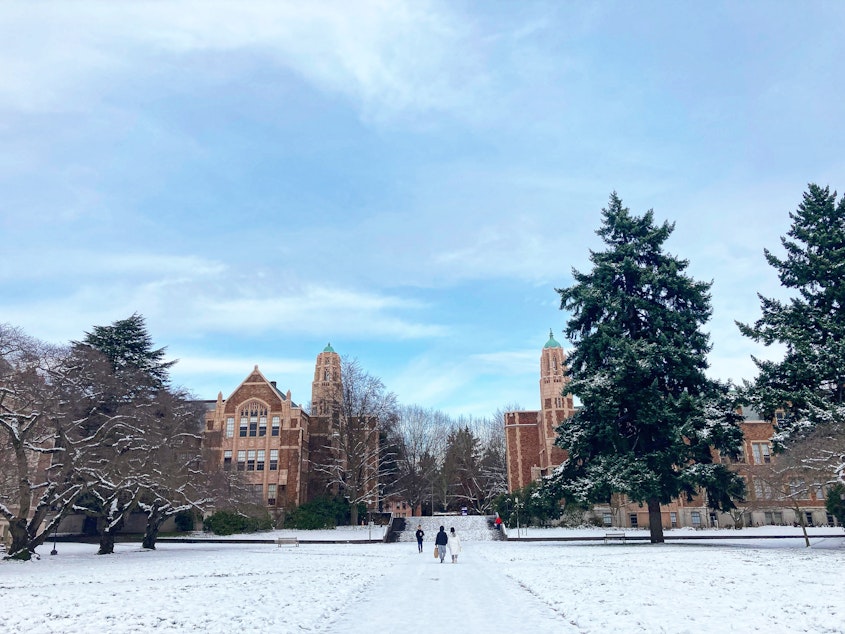Climate change in the Northwest: What we learned in 2021 and a sociological solution

Record-setting heat, prolonged drought, severe flooding and, in these finals days of the year, sub-freezing cold and snow — 2021 will go down in the climatological history books.
What did climatologists learn?
And what needs to change about how they share those lessons?
Nick Bond is the Washington state climatologist. He, like other climate scientists, is adamant it's not "too late" to do something about climate change.
"We can both mitigate it and adapt to it," he says.
But to do that, he says we have to adjust how we think about the data.
Probalistic forecasting
Bond says to be more proactive in our response to climate change, we have to trade certainty for preparedness.
Consider the difference between these two statements:
- The high on June 26 is expected to reach the triple digits. Emergency cooling centers may have space available for those in need.
- The average temperature in June is rising. Long-term investments in shelters and housing may reduce the number of heat-related deaths.
This is an oversimplified example.
But Bond says the National Weather Service is working on improving forecast data and how that data is shared with the public.
"The point there is to try to figure out those sectors of society that are more vulnerable," he says. "And try to figure out what we can do to make them more resilient to the changes that are already occurring and that are going to be just accelerating in the future."
'What does that really mean?'
"A lot of this is how we communicate what we're seeing, so it is usable information," Bond says.
Consider this statement, for example: "There's higher odds than usual of lower-than-normal temperatures."
Bond says information presented like that could understandably leave the general public wondering: "What does that really mean?"

The deadly June heatwave was an example of how poor communication can lead to long-term damage.
That heatwave killed hundreds of people across the region and cooked millions of shellfish alive.
Bond says the human toll, at least, did not have to be so high.
Forecasters knew there was a potential for something that severe before the heatwave was upon us, he explains. But in Bond's opinion, not enough was done to get that message out to the public, because it wasn't guaranteed.
That hesitancy likely cost lives, he says.
What's at stake?
From an environmental perspective, it's not just about saving lives; it's about identifying the communities our changing climate has the greatest impact on.
Blue-collar workers in agriculture or construction, for example, are likely to be affected by rising temperatures; that's especially true in the Pacific Northwest, where the hottest months are often the busiest.
Similarly, access to A/C and heat can determine whether someone will make it through extreme heat or cold.

Bond says flooding reveals socioeconomic divides, too. Consider low-income families living in flood-prone areas; moving to higher ground is far easier said than done if you're living paycheck to paycheck.
These are just the human impacts. Bond says rising temperatures may also bring more pests to the region that may not have otherwise been able to survive in our climate.
More mosquitos carrying West Nile virus could survive here longer. Crops could be threatened.
Are you a fan of potatoes? So is the destructive potato psyllid; they like tomatoes, too, by the way. Bond says warmer weather could mean a warm welcome for the pest.

It may be hard to imagine warm weather with snow on the ground.
Bond says we should be grateful for recent conditions, at least in part; the snowpack is certainly shaping up to be healthy for 2022.
Still, the extreme swing from record heat in June to sub-freezing in December is a concern: "Whether it is just a coincidence or whether these swings are getting larger, that is something that is not completely figured out," Bond says.





